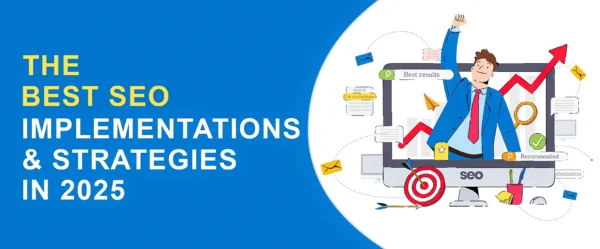How to effectively exchange links? This is a question that has been on the internet for a long time now. Link exchange is one process that a lot of SEO specialists are now opting for. That is because it helps in creating a strong backlinking profile for websites when used and implemented correctly. For those who don’t know what link exchange is, let me enlighten you. This is a process that includes two websites that agree to share links to each other’s content. But what is the purpose of this little process? Well, there are a lot of benefits that you can get from exchanging links.
One of the main benefits that you get from exchanging links is the fact that it can boost your domain authority. This is a process that benefits both parties by boosting their visibility, exposure, and driving relevant traffic. However, the approach to link exchange has evolved significantly over the years. People in the past relied on the fact that exchanging links is something that is like a numbers game. However, nowadays this is one approach that you need to think strategically about.
Trading links without giving it all much thought is something that won’t work if you’re looking for a successful link-exchanging process. But why did things change? That is because search engines are becoming smarter than ever with each second that passes by us in this era of technological advancements. Nowadays, quality is at the top of the pyramid when it comes to search engine prioritizations. In this guide, we will discuss the top methods that you can use and learn in order to effectively exchange links.
Why Link Exchange Remains Relevant in SEO
In 2025, link exchange remains one of the main strategies that will help your SEO strategy thrive and help your website get the exposure it deserves. But why is it still keeping its own shining glam while other techniques have faded away with the years? The main reason here lies in the fact that effectively exchanging links helps you have the ability to build your own authority and drive more traffic. Search engines like Google use backlinks as a trust signal; when reputable sites link to your content, it demonstrates that your website is a credible source of information. This trust translates into higher rankings, increased visibility, and ultimately, more traffic.
Additionally, link exchange also fosters collaboration between websites. Imagine the following hypothetical scenario with me. Imagine having a finance blog that is personal and has it collaborate with an investment platform. Wouldn’t that grant them great empowerment? Through simultaneously enhancing their online presence? It would, and that results in a win-win situation for both websites and their audiences.
Another key aspect is user engagement. High-quality external links can enrich your content and encourage users to explore related topics, making their visit more valuable. This aligns with search engines’ growing emphasis on user experience, further cementing link exchange as a relevant and impactful SEO practice.
How to Effectively Exchange Links? The Dos and Don’ts of Link Exchange
Executing a successful link exchange requires a clear understanding of a lot of things. Like best practices, smart techniques, trends, and common mistakes. It’s known that you can face some challenges that can harm your SEO rather than help it. So, what should you do, and what should you avoid?
On the “do” side, because I like to start with all that is positive, relevance is critical. Always aim to exchange links with websites that share a similar niche or audience. For instance, a tech review blog exchanging links with a gadget store makes perfect sense, as their audiences overlap. Additionally, it’s essential to assess the authority of potential partners. Tools like Moz and Ahrefs can help determine whether a website has a strong domain authority and a clean backlink profile, ensuring that their link to your site will positively impact your SEO. Transparency is also key. You have to make sure that both parties clearly understand the mutual benefits of the exchange they’re doing.
On the other side, avoid linking to spammy links or links with low quality from unknown or notorious websites. These can lead to penalties from search engines and damage your credibility. Overdoing reciprocal links—where two websites excessively link to each other—can also appear manipulative to search engines. This can lead to a great reduction in the effectiveness of your efforts. When you adhere to such guidelines that search engines put, you guarantee for yourself that you create a strategy that helps you effectively exchange links.
How to Identify High-Quality Link Exchange Opportunities
Finding the right websites to partner with for link exchange is arguably the most challenging part of the process. Not all links are created equal, and partnering with low-quality or irrelevant sites can backfire. So, how do you identify high-quality opportunities?
Start by researching your niche. Understanding your niche will allow you to discover relevant websites that can help you build a strong backlinking profile for yourself. Websites that target a similar audience but offer complementary content are ideal candidates. Let me walk you through a hypothetical example. A fitness website might look for nutrition blogs, yoga instructors, or sports gear stores as potential partners. These are considered relevant connections that will help the website bring more value to its content and audience. Using tools like SEMrush or Ahrefs can streamline this process by providing insights into a website’s authority, traffic volume, and backlink profile.
Another effective method is conducting a thorough competitor analysis. You can do that by identifying websites that link to your competitors. If they see value in linking to a similar business, they might be open to linking to yours. For example, a travel agency could reach out to blogs or forums that already link to rival agencies, pitching their unique value proposition as an alternative. Building a list of high-quality prospects ensures that your link exchange efforts are more targeted and impactful.
How to Effectively Exchange Links? Tools and Platforms to Simplify Link Exchange
In the fast-paced digital world of 2025, managing link exchanges manually can be overwhelming. Fortunately, a range of tools and platforms can simplify the process, saving time and improving efficiency. These tools not only help you identify potential partners but also streamline outreach and track results.
One standout option is linkexchange.ai, an innovative platform designed to connect websites with complementary audiences. Using AI-powered algorithms, it matches you with ideal link exchange partners based on your niche, audience demographics, and SEO goals. This eliminates the uncertainty from the process, enabling you to concentrate on establishing significant partnerships.
Other tools, like BuzzStream, are great for managing outreach. They help you organize contact lists, track conversations, and schedule follow-ups, ensuring no opportunity slips through the cracks. Tools such as Ahrefs and SEMrush, on the other hand, provide valuable insights into the domain authority and backlink profiles of potential partners. This enables you to make informed decisions. When you leverage these tools, you will be able to transform your link exchange strategy from a heavy task that overwhelms you into a streamlined, results-driven process.
The Role of Content in Successful Link Exchanges
Content is paramount in link exchange. High-quality content not only attracts potential link exchange partners but also ensures the links themselves are meaningful and impactful. Without valuable content, your website may struggle to convince others that linking to you is worth their while.
The most effective way to secure high-quality link exchanges is to create content that provides unique value. This could take the form of in-depth guides, original research, or industry-specific insights. For example, a marketing agency that publishes an authoritative report on 2025 SEO trends is more likely to attract links from blogs, news outlets, and other marketers. Similarly, a fashion retailer might create a seasonal trend forecast that garners links from lifestyle blogs and online magazines.
Moreover, your content should align with your link exchange goals. If you’re targeting fitness blogs, your content should appeal to their audience, such as workout plans or health tips. Investing in quality content ensures that your website becomes a valuable resource, naturally attracting link exchanges and boosting your overall SEO efforts.
Wrapping It Up
In 2025, link exchange is more than just a tactic. In fact, it’s a form of art. When you focus on providing quality, building genuine relationships, and leveraging tools like linkexchange.ai, you can transform your SEO strategy and achieve measurable results. The key lies in staying informed, prioritizing relevance, and continuously refining your approach. Ready to elevate your SEO game? linkexchange.ai makes it easy to find high-quality link exchange partners and streamline your efforts. Start building smarter, more impactful links today, and take your website to the next level.










